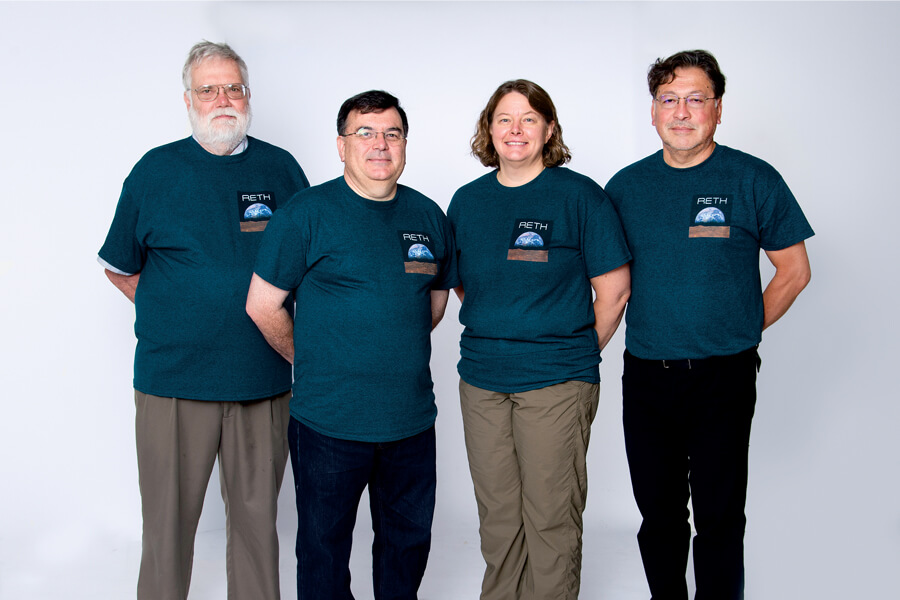Moon and Mars
| Author: | Drew Stone |
|---|---|
| Magazine Section: | Strategic Growth Initiative |
| College or School: | CoE |
| Article Type: | Article |

If you’ve seen the movie “The Martian,” starring Matt Damon as an astronaut presumed dead and left behind on Mars, then you know he manages to stay alive for years inside an artificial habitat nicknamed “The Hab.” Just how realistic is that structure? Not very, says Antonio Bobet, professor of civil engineering.
“We’ve seen a lot of conceptual designs similar to the one shown in the movie, but they won’t work,” he says. “They’re not resilient. They won’t protect human or plant life from wild temperature fluctuations and hazards such as meteoroid impacts and intense particle radiation.”
What will? That’s what Purdue’s new Resilient Extraterrestrial Habitats (RETH) team has set out to discover. Comprised of Bobet, four other principal investigators and several postdoctoral and student researchers (see sidebar for full list), the team received the first New Horizons grant awarded by the Office of the Provost in March 2017. New Horizons is a competitive program challenging established senior faculty to create new academic areas for the coming decades.
“There’s a great deal of interest from NASA and others to send people to the Moon and Mars, and plenty of science already exists on the effects of radiation on humans and on the geology and properties of space materials,” Bobet says. “What we’re doing is transferring that science to engineering. We’re looking at the hazards systematically, then quantifying and expressing the results in a way that is useful to engineers.”
Student researcher Herta Montoya, for example, is exploring the effects of meteoroid impacts on the lunar surface — a hazard that typically isn’t considered when designing structures on Earth. A civil engineering student at the University of Texas at San Antonio, Montoya joined the RETH team as part of Purdue’s Summer Undergraduate Research Fellowship Program.
“It’s a big challenge to design extraterrestrial habitats because of the extreme conditions faced out of the Earth’s atmosphere,” she says. “Few studies have proposed a numerical approach or methodology to develop risk assessments for a lunar habitat in terms of hazards. We’re doing rigorous research to help conceptualize and quantify these hazards to assure a safe design for future extraterrestrial habitats.”
In the midpoint of its two-year grant, the RETH team will host an international workshop in October 2018 focused on key hazards. Creating a network of experts both within and outside Purdue will help the team define its key research questions and prepare to approach funding agencies with its ideas.
Another goal is to create a path for a minor in extraterrestrial habitat engineering within Purdue’s Lyles School of Civil Engineering. The RETH team is multidisciplinary — including researchers from earth, atmospheric, and planetary sciences; mechanical engineering; and aeronautical and astronautical engineering — with civil engineering taking the lead.
“Civil engineers help drive progress, communications and economic and cultural exchange,” Bobet says. “The infrastructure we create will satisfy human needs for research, exploration and daily living — ultimately enabling humans to survive and thrive away from Earth.”